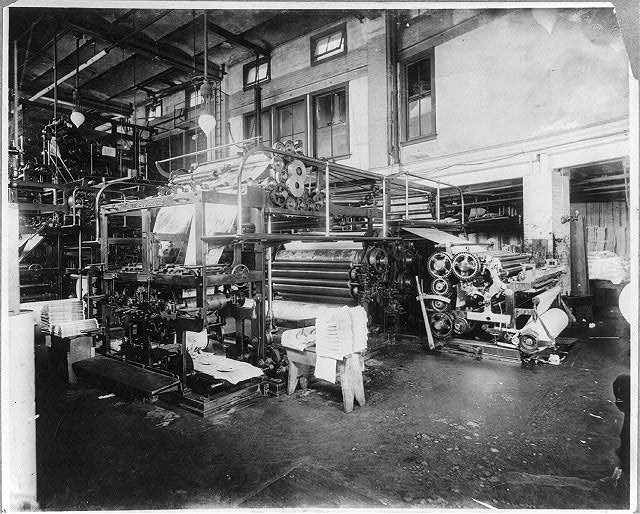
Library of Congress
Jonathon S. Platt
Web and social media editor
It was 4 a.m., and I was out on the stoop of my apartment building reading the Times, when I thought, “How did this newspaper make it to my door step? How had the New York Times made it through 164 years of culture shifts to put a paper in my hands in Waco in 2015?”
Saturday evening, I couldn’t sleep. After rolling in bed for hours and exhausting nearly an entire season of “Big Bang Theory,” I had gone for a walk. Upon returning to my apartment complex, I saw my daily copy of the Times waiting for me.
I sat on the stairs in the cool spring air and read page after page of “All the News That’s Fit to Print.” After I finished the first section I went inside for bed, but I still couldn’t sleep. My head was consumed with the question, “How did the New York Times grow from an idea in the mind of Henry Jarvis Raymond to the third largest nationally circulated paper?”
More importantly, I contemplated: How are they handling the change in modern news culture?

Library of Congress
So many papers are vanishing — being swallowed up by their inability to keep the lights on. Even larger, dominant sources of old news media are cutting back. (The Washington Post recently announced it will be subsidizing it’s Saturday and Sunday issues into a single weekend edition.)
The media has always experienced waxing and waning readership for simple reasons, like when the Times dropped the period in its nameplate and lost almost 1,000 subscribers. But now we’re in a free fall and the ground is approaching fast.
Everyone — and I mean everyone — will express their lack of faith in print newspapers when you tell them you’re studying journalism. Advertisers, writers and investors are all jumping ship for the fad of social media.
With what seems like everyone against our industry, what are journalists to do?
Since the beginning of time, organisms have had two choices: adapt or die. Over the years, natural selection has not weeded through the weaker species, it’s merely worked in the favor of those who rolled with the punches and punished those who lacked an embrace of change.
Humans survived. We adapted. But many animals, like the Stephens Island Wren, could not adapt to a change in predators, environment or characteristic needs and so became extinct.
Extinction. That’s a word we throw around a lot in the news business. Like: “Do you think our jobs will ever become extinct?”
The answer is both yes and no because it all depends on whether newspapers chooses to adapt or die. The ones who morph, squirm, shrink, grow, sprint and claw their way through the changing media environment will come out on the other side.
The Times has been around for over 150 years because they’re big, but in the age of swift innovation and a reliance on connectivity, their tactics of falling back on stable, tried-and-true standards might not keep them afloat. Moving forward in the era of engagement will take lots more than just surviving or just treading water. To be successful today, one has to be ready to experiment, fail, reevaluate and try again without ceasing. To stay afloat, we’ve got to try every stroke in the book.
Evolution is key, especially in such drastic times of change.






